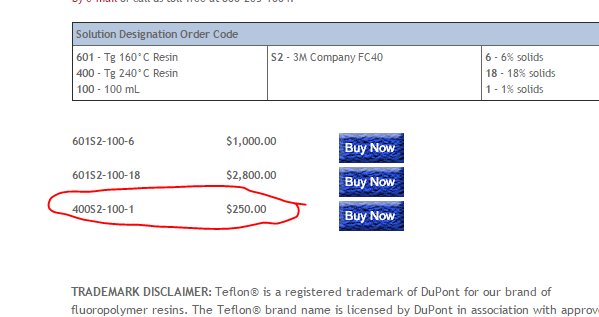If you find this coating
protocol useful for you, please properly cite this article (Li, Y.,
Baker, RJ, Improving the performance of electrowetting on dielectric
microfluidics using piezoelectric top plate control, Sensors and
Sctuators B: Chemical, 229 (2016), 63-74.) in your publications, thanks.
1. Read the physical and chemical properties of Teflon AF solutions. link.
2. Notice that, after spin coating, there are two steps are very
critical to form robust Teflon film: 1) 25 celcius - 50 celcius for
5-10 min (I just put it in room temperature for 10-15 min until the
surface looks clear enough). 2) 10 min in oven at 165+10=175 celcius.
165 is the solvent boiling point. My teflon is:

So the solvent is 3M company FC40,
which has a boiling point of 165 celcius. Therefore, following the
instructions, the baking temperature should be 175 celcius (very very
important).
3.
The spin coating speed can be 1000 rpm - 2000 rpm (I prefer 1000 rpm),
it doesn't affect the performance when the thickness varies a little
bit.
4.
Be careful that the teflon I used is not available at DuPont any more,
but whatever Teflon you would use, make sure that the baking
temperature is >= the solvent boiling piont to make the teflon
robust.
*5,
More tips: Using 1000 rpm, and baked it very well, then using 110 V
pulses to drive it (personal portable driver). 130 V pulses will
actuate drops more efficiently. However, be careful with using voltages
higher than 150 V-200 V. The durability of the Teflon will decreasse.
It depends on the parylene C thickness. Using thicker layers will be
able to handle higher voltages. 